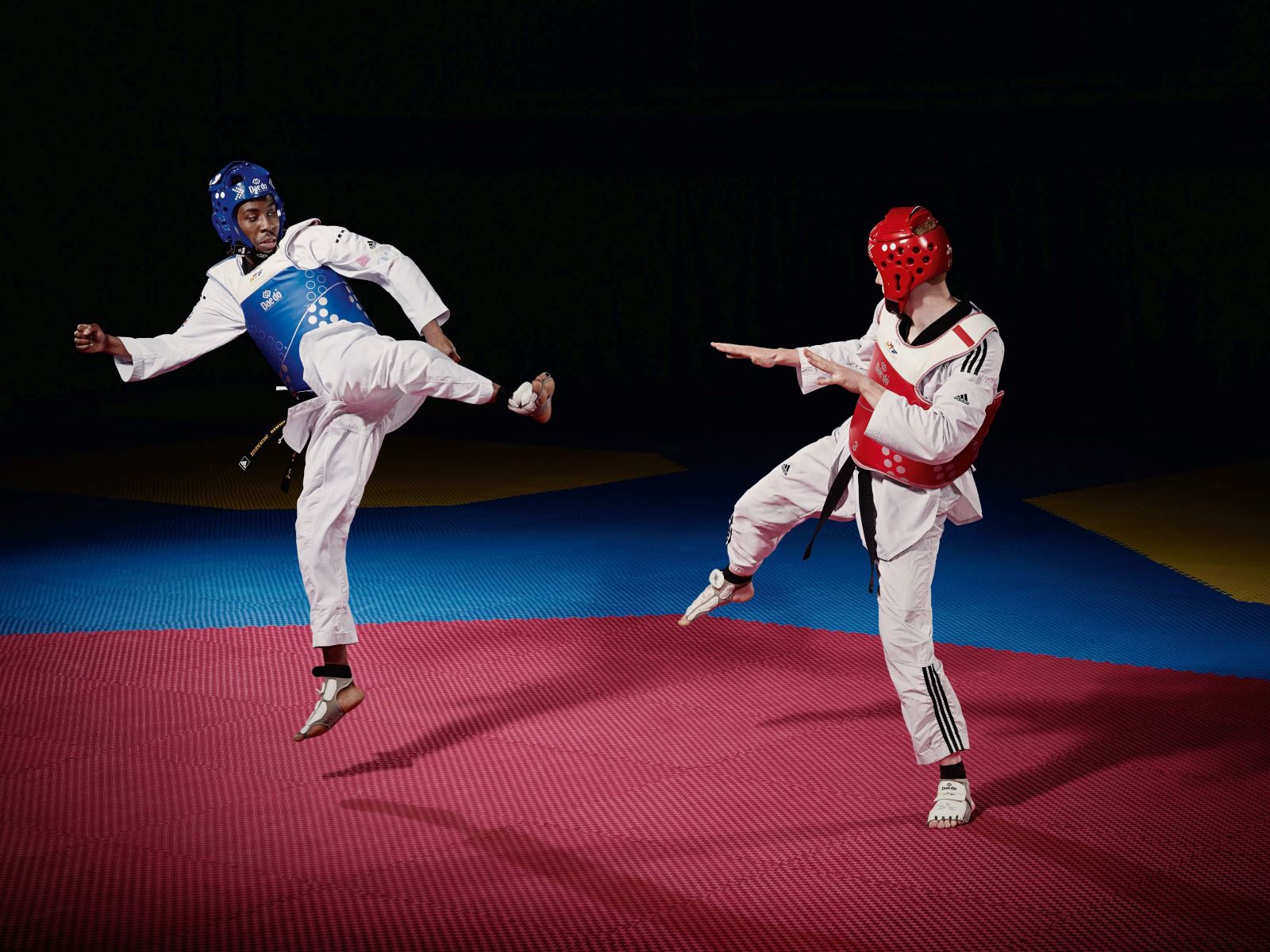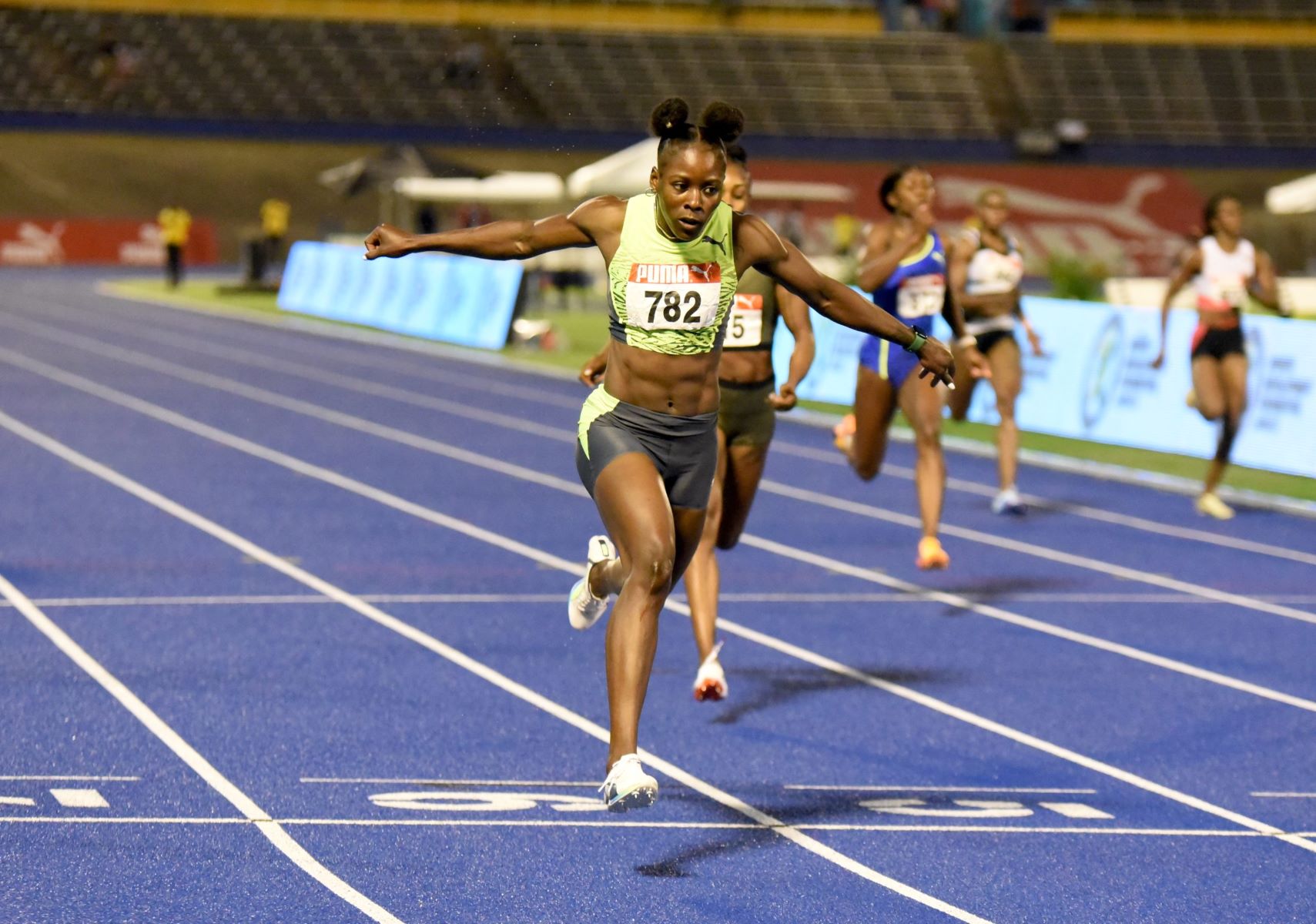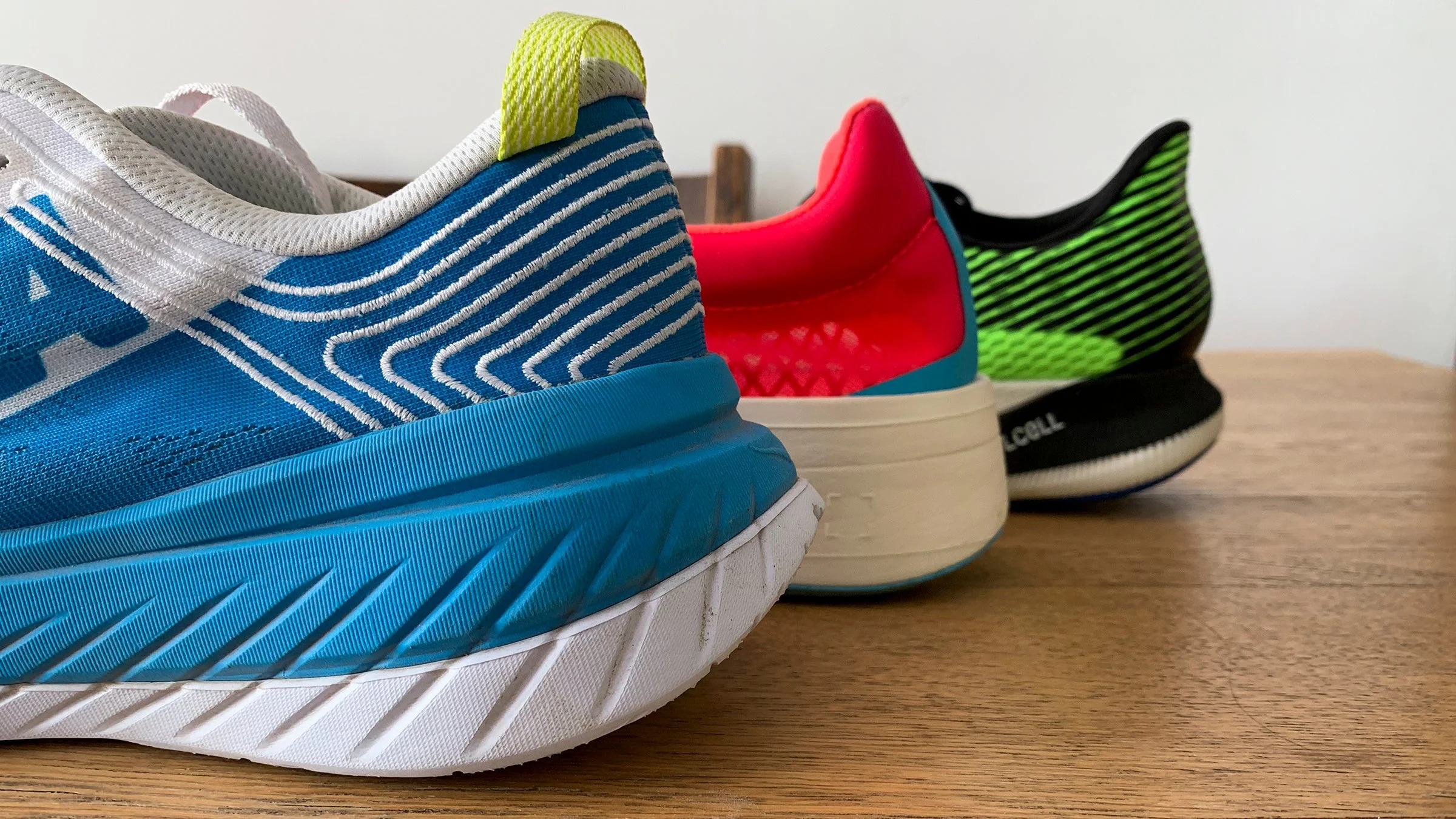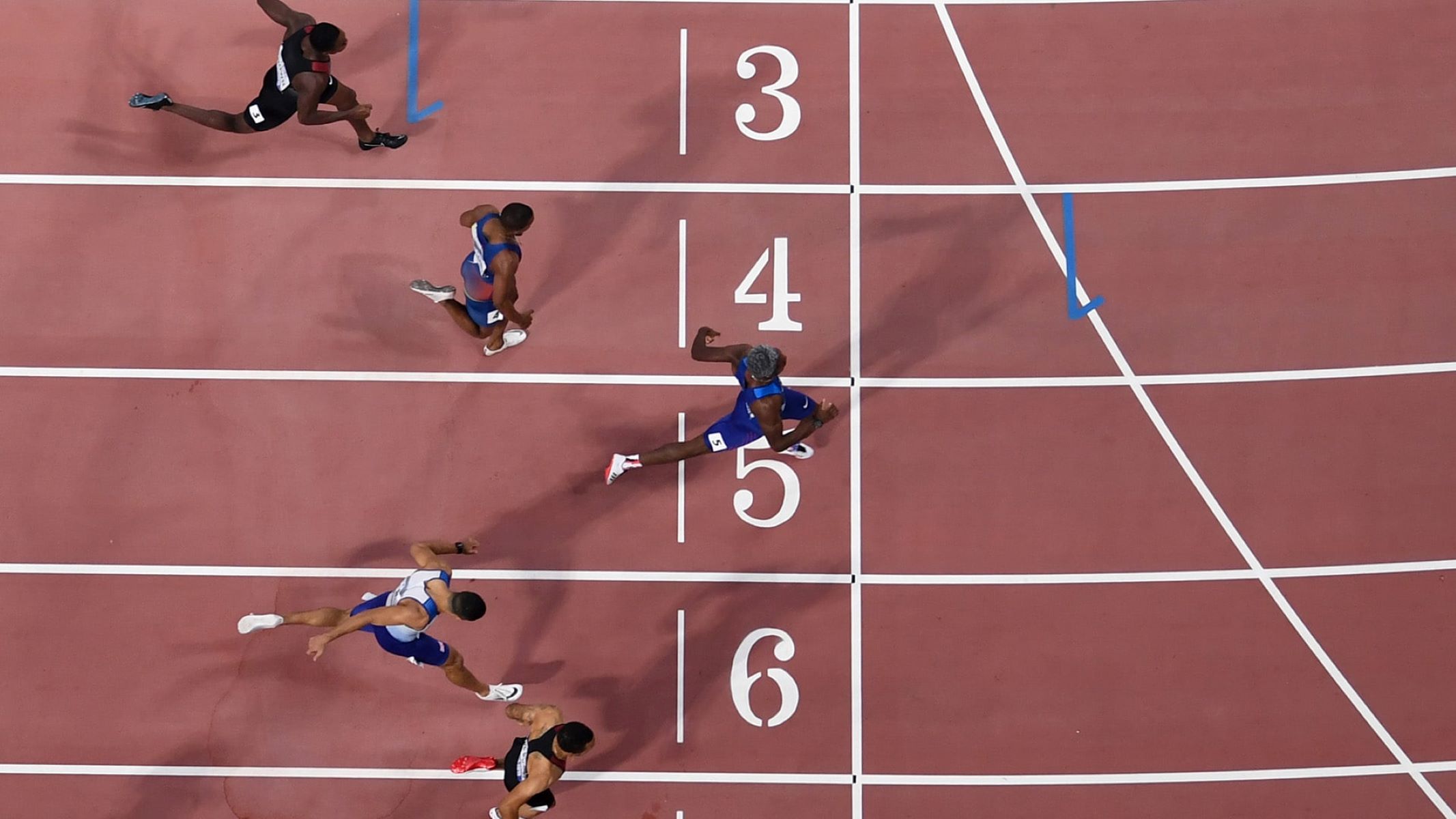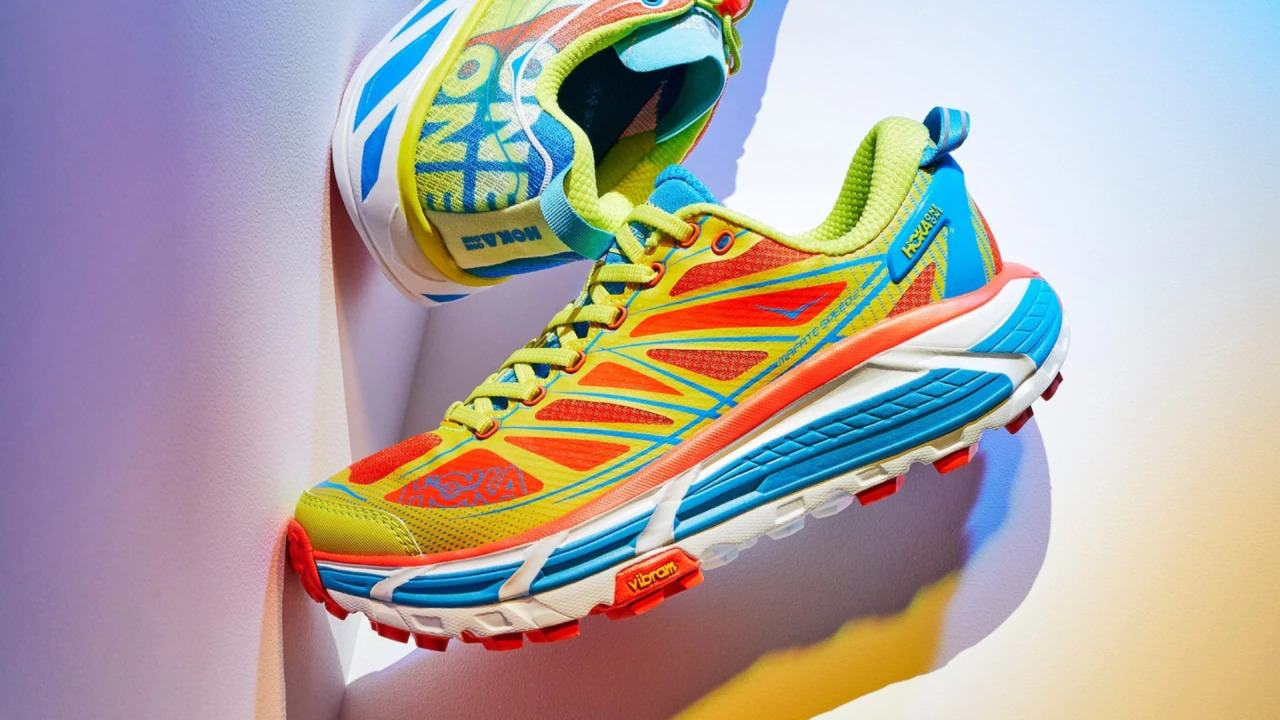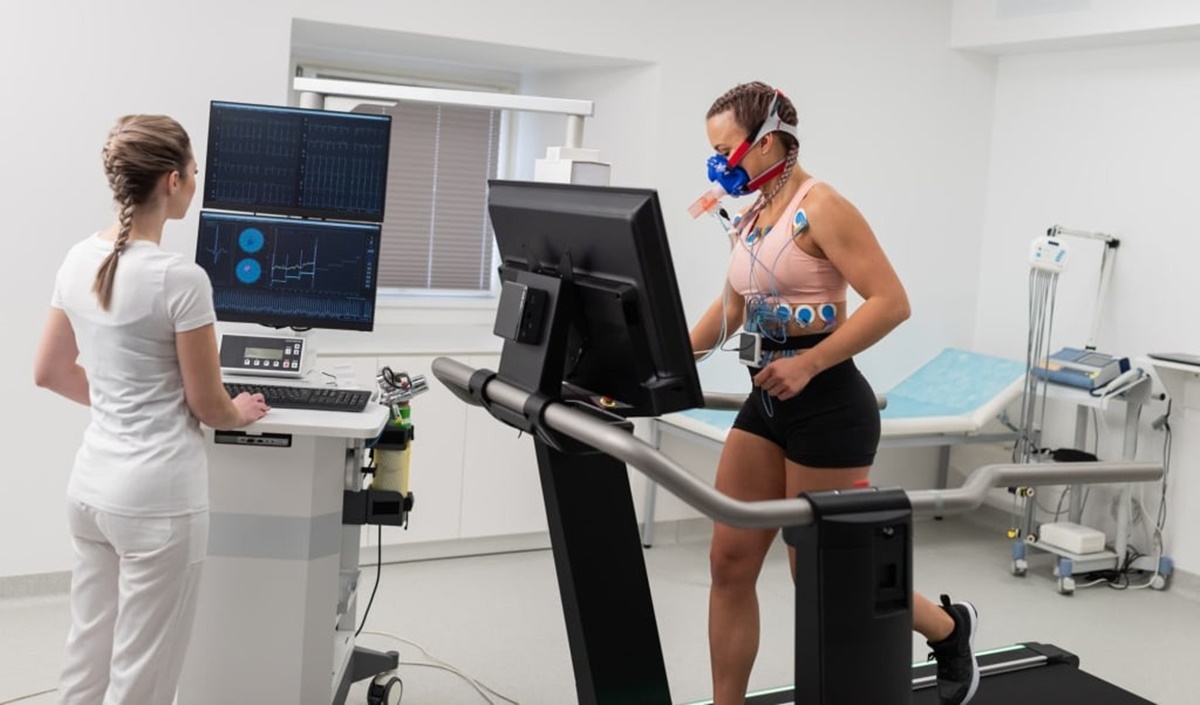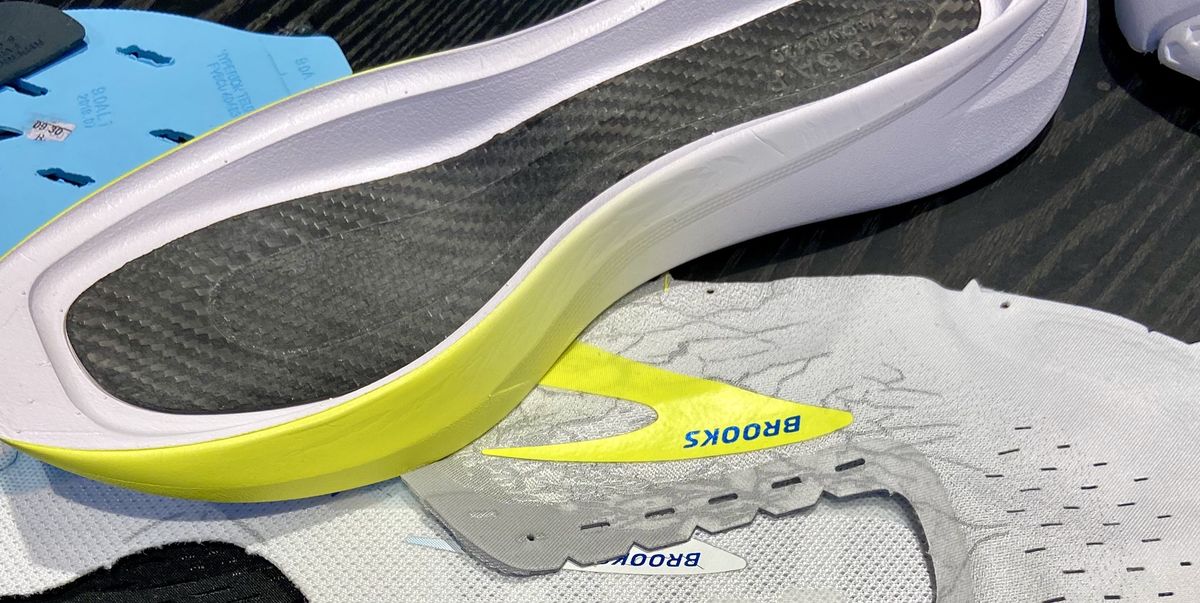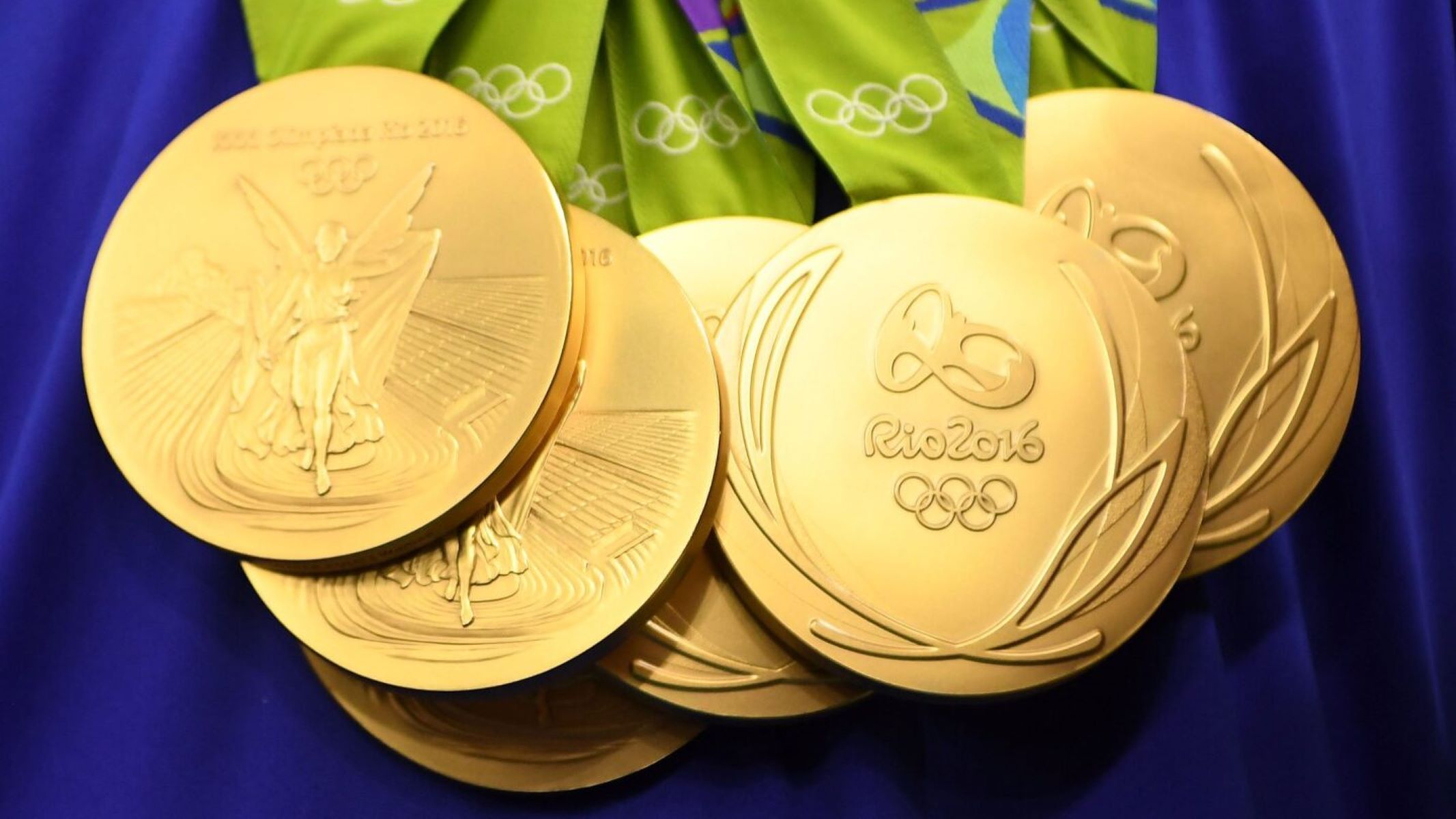Home>Misc>Featured>How Can Sport Biomechanics Contribute To The Advance Of World Record And Best Athletic Performance?
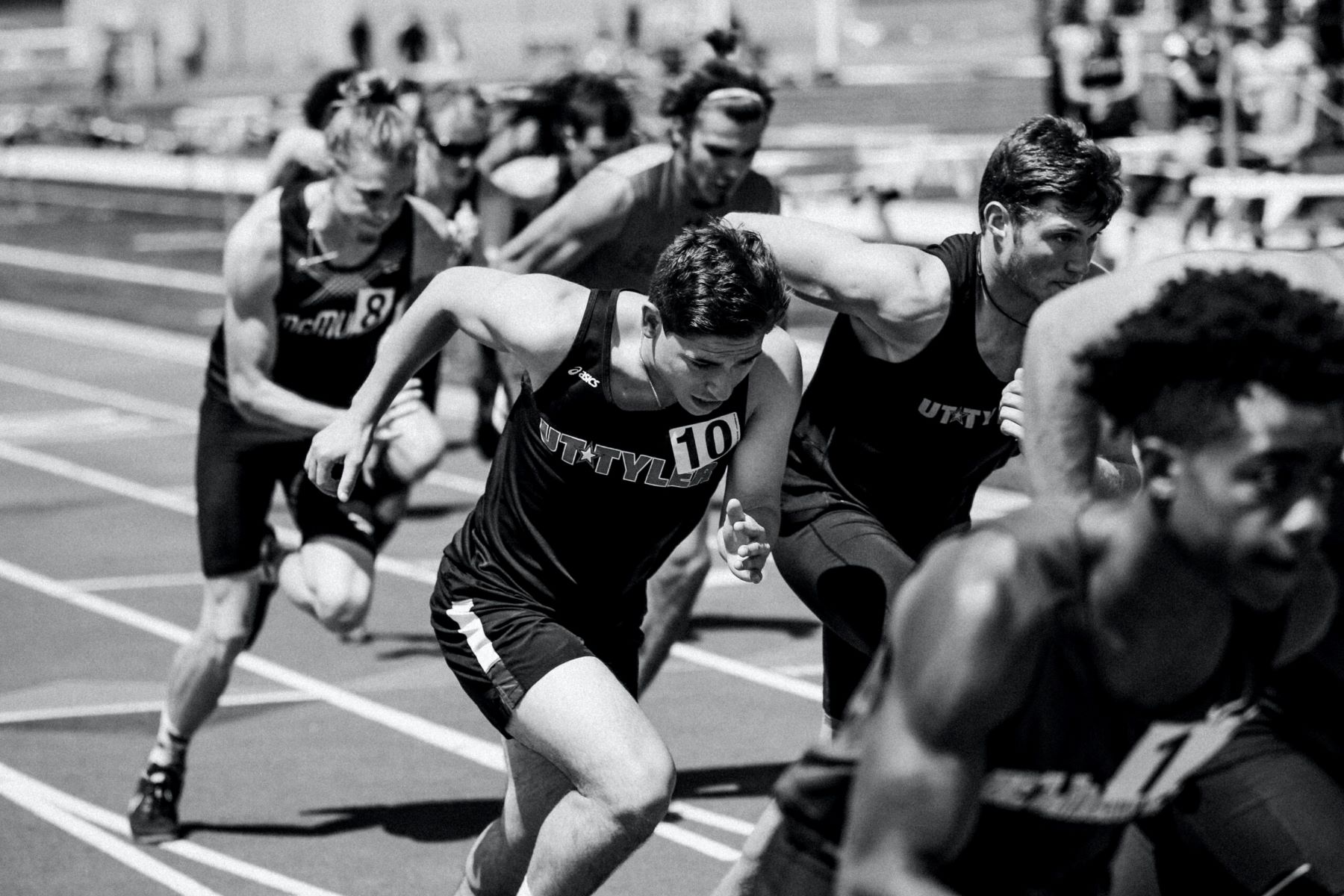

Featured
How Can Sport Biomechanics Contribute To The Advance Of World Record And Best Athletic Performance?
Modified: August 21, 2023
Discover how sport biomechanics can contribute to the advancement of world records and enhance athletic performance. Explore the featured insights and techniques in this comprehensive guide.
Introduction
Sport biomechanics is a field that encompasses the study of how the human body moves during athletic activities. By analyzing the principles of physics and mechanics, sport biomechanics aims to understand the mechanical aspects of sports performance and improve the efficiency and effectiveness of athletes. With its profound impact on world records and athletic performance, sport biomechanics has become an invaluable tool in the pursuit of reaching new achievements and pushing the boundaries of human capabilities.
Understanding how the body moves and performs in sports is essential for athletes, coaches, and sports scientists. By examining the biomechanics of a particular sport, experts can identify key factors that contribute to optimal performance. From analyzing stride length and angle in running to studying the kinematics of a golf swing, sport biomechanists provide valuable insights that can enhance an athlete’s technique, power, speed, and overall performance.
The significance of sport biomechanics goes beyond individual sports and athletes. It plays a crucial role in the development of world records. By examining the movements and techniques of record-breaking performances, researchers can identify the critical biomechanical factors that contribute to success. This knowledge can then be shared with athletes and coaches to help them improve and potentially surpass those records.
Moreover, sport biomechanics has contributed to advancements in athletic performance across various disciplines. By understanding the optimal angles, forces, and techniques required for specific movements, athletes can train more effectively and efficiently. This knowledge allows them to streamline their movements, reduce energy expenditure, and minimize the risk of injury, ultimately leading to improved performance.
In recent years, sport biomechanics has experienced significant innovations, thanks to advancements in technology. Motion capture systems, force plates, and high-speed cameras enable researchers to capture and analyze movements in unprecedented detail. This technological progress has allowed for a more accurate and comprehensive understanding of biomechanics, leading to new training methods, equipment designs, and performance-enhancing strategies.
While sport biomechanics offers numerous benefits and opportunities, it also faces challenges and limitations. The complexity of human movement and the individual differences among athletes make it challenging to derive universal principles. Additionally, the application of biomechanics in real-world settings can be influenced by factors such as environmental conditions, fatigue, and mental state.
In this article, we will delve further into the world of sport biomechanics, exploring its importance in world records and athletic performance. We will analyze examples of biomechanical analysis in world records and examine how sport biomechanics can enhance athletic performance. We will also discuss the latest innovations in the field and address the challenges and limitations faced by sport biomechanics. By the end of this article, you will have a deeper understanding of the profound impact that sport biomechanics has on the advancement of world records and the improvement of athletic performance.
Understanding Sport Biomechanics
Sport biomechanics is a multidisciplinary field that combines principles of physics, engineering, and anatomy to study the motion and mechanics of the human body in sports. By utilizing advanced technology and mathematical models, sport biomechanists aim to understand the forces, torques, and motions involved in athletic activities.
One of the primary goals of sport biomechanics is to analyze and evaluate the human body’s movements during various sports activities. This analysis involves examining factors such as joint angles, muscle contractions, force production, and energy expenditure. By studying these aspects, biomechanists can determine the most efficient movement patterns and techniques to improve athletic performance.
Biomechanics can be applied to all sports and activities, including running, jumping, throwing, swimming, and even team sports like soccer or basketball. Each sport presents its unique challenges and demands on the human body, requiring tailored biomechanical analysis to optimize performance.
Biomechanical analysis typically involves using specialized equipment and technology. Motion capture systems, for example, are used to track the movement of specific body parts during sports activities. Force plates measure the forces exerted by an individual during a jump or a sprint, providing insights into performance and technique. High-speed cameras capture movements at a high frame rate, allowing for detailed analysis of joint angles, velocities, and accelerations.
Within the field of sport biomechanics, several concepts and principles are fundamental for understanding and analyzing human movement. Kinematics, for instance, involves the study of the motion of the body without considering the forces that cause that motion. This includes analyzing joint angles, displacement, and velocity of body segments. Kinetics, on the other hand, involves the study of the forces that act on the body, such as ground reaction forces, muscle forces, and external forces.
Another key concept in sport biomechanics is the analysis of the key performance variables (KPVs). These are measurable factors that significantly influence athletic performance. For example, in distance running, some KPVs include step length, step frequency, and ground contact time.
Understanding sport biomechanics goes beyond analyzing individual movements. It also involves examining the interactions between different body segments and joints, as well as the coordination and timing of movements. This holistic approach allows biomechanists to identify areas of improvement and develop strategies to optimize performance.
By understanding the fundamental principles of sport biomechanics, coaches and athletes can make informed decisions in training, technique, and equipment selection. Biomechanical analysis can help identify inefficiencies, asymmetries, or limitations in an athlete’s movements, which can be targeted through training and corrective exercises.
In summary, sport biomechanics is the study of the mechanical aspects of human movement in sports. By analyzing the forces and motions involved, biomechanists gain valuable insights into optimizing athletic performance. This knowledge can be applied across different sports, helping athletes and coaches make informed decisions and ultimately improve their performance.
Importance of Sport Biomechanics in World Records and Athletic Performance
Sport biomechanics plays a crucial role in the pursuit of breaking world records and improving athletic performance. By examining and analyzing the mechanics of an athlete’s movements, biomechanists can identify key factors that contribute to optimal performance and enhance an athlete’s chances of reaching new heights.
One of the primary ways sport biomechanics contributes to world records is through the identification of technical improvements. By analyzing the movements of record-breaking performances, biomechanists can pinpoint specific aspects of technique that contribute to success. This knowledge can be shared with athletes and coaches to help them refine their technique and potentially surpass existing records.
Biomechanical analysis can reveal inefficiencies or limitations in an athlete’s movements. For example, it may uncover suboptimal joint angles, improper force application, or inconsistencies in movement patterns. By addressing these issues and making adjustments to technique or training, athletes can optimize their movements and improve performance.
Furthermore, sport biomechanics allows for the identification of performance-limiting factors. By analyzing forces, velocities, and angles, biomechanists can determine which specific variables significantly impact an athlete’s performance. This insight allows athletes and coaches to focus their training efforts on improving these variables, leading to enhanced performance and potentially breaking world records.
Another significant contribution of sport biomechanics is the development of equipment and technology to aid athletes in their pursuit of world records. By studying the interactions between the athlete and various sports equipment, such as shoes, bikes, or swimming suits, biomechanists can design and optimize equipment to provide athletes with a competitive advantage. This can include improvements in aerodynamics, reducing energy losses, or enhancing ergonomics to maximize an athlete’s performance potential.
Importantly, sport biomechanics provides a scientific and evidence-based approach to training and performance improvement. By using advanced technology to measure and analyze an athlete’s movements, coaches can make data-driven decisions in designing training programs and techniques. This precision and objectivity allow for targeted training interventions that can lead to significant advancements in performance, potentially resulting in world record-breaking achievements.
Furthermore, sport biomechanics can help identify injury risk factors and aid in injury prevention. By studying the loading forces on joints and the kinematics of movements, biomechanists can identify movement patterns that may lead to increased stress or strain on specific body regions. This knowledge can be used to develop injury prevention strategies, including exercise programs to improve movement efficiency and reduce the risk of overuse injuries.
In summary, sport biomechanics is of paramount importance in the world of athletics and the pursuit of world records. The analysis of an athlete’s movements and mechanics allows for the identification of technique improvements, performance-limiting factors, and the design of optimized equipment. By incorporating sport biomechanics into training and performance enhancement strategies, athletes have the opportunity to achieve new heights and surpass existing records.
Biomechanical Analysis of World Records
Biomechanical analysis plays a crucial role in understanding and breaking world records in sports. By studying the movements and mechanics of record-breaking performances, biomechanists can uncover valuable insights into the factors that contribute to exceptional athletic achievements. Through meticulous analysis, researchers can identify key biomechanical elements that set world records apart from previous performances.
One area of focus in biomechanical analysis is the examination of technique and movement patterns. By closely studying the movements of athletes who have achieved world records, researchers can identify specific aspects of their technique that contributed to their success. This can include studying joint angles, body positions, and coordination between body segments. Biomechanical analysis provides objective data and insights into optimal movement patterns that can be shared with athletes and coaches, enabling them to refine their technique and potentially surpass existing records.
For example, in track and field events like the long jump or high jump, biomechanical studies have revealed the importance of factors such as take-off angles, body positioning in mid-air, and landing techniques. By understanding the physics and mechanics involved in these events, athletes can optimize their technique to achieve greater distances or heights, leading to record-breaking performances.
Another area of focus in biomechanical analysis is the study of forces and energy in sports movements. By measuring forces exerted on the body or tracking energy expenditure during specific activities, researchers can gain insights into the efficiency and effectiveness of an athlete’s performance. This information can help identify energy leaks or inefficient force production, ultimately guiding athletes towards more efficient movement patterns and enhancing their chances of breaking world records.
Biomechanical analysis also provides insights into the role of equipment in world records. By examining the interactions between athletes and their equipment, researchers can identify design elements that contribute to improved performance. For example, in swimming, the study of drag forces and body positioning has led to the development of streamlined swimsuits that reduce resistance in the water, enabling swimmers to achieve faster times and break records.
Furthermore, biomechanical analysis can shed light on the physiological capacities of record-breaking athletes. By monitoring variables such as muscle activation patterns, joint torques, and metabolic demands, researchers can gain a better understanding of the unique physiological characteristics of top performers. This knowledge can be valuable for determining the limits of human performance and potentially guiding the training and development of future athletes.
Overall, biomechanical analysis of world records provides valuable insights into the technical, mechanical, and physiological factors that contribute to exceptional athletic performances. By studying the movements, forces, and equipment involved, researchers can identify key elements that differentiate world records from previous achievements. This knowledge can be used to guide athletes and coaches in optimizing technique, improving performance efficiency, and pushing the boundaries of human capability to break world records.
Enhancing Athletic Performance through Biomechanics
Sport biomechanics plays a pivotal role in enhancing athletic performance. By analyzing the mechanics of human movement, biomechanists can identify areas for improvement, optimize technique, and maximize an athlete’s potential. Through the application of biomechanical principles, athletes can enhance their performance in various sports and disciplines.
One of the primary contributions of biomechanics to performance enhancement is the identification of inefficiencies or limitations in an athlete’s movements. By analyzing joint angles, force production, and motion patterns, biomechanists can pinpoint areas that may be hindering performance. This information can guide athletes and coaches in making necessary adjustments to technique or training, leading to more efficient movements and improved performance.
Furthermore, biomechanics provides insights into optimizing performance parameters such as speed, power, and endurance. By studying the biomechanics of activities like running, jumping, or throwing, researchers can identify key factors that influence these parameters. This knowledge can be used to develop focused training programs and technique modifications that enhance an athlete’s ability to generate more force, produce power more efficiently, or maintain optimal body position and alignment during performance.
Another aspect where biomechanics contributes to athletic performance enhancement is injury prevention. By examining movement patterns and forces exerted on joints and tissues, biomechanists can identify potential areas of risk for injury. This information allows for the design of targeted training interventions to improve technique, reduce stress or strain on vulnerable body regions, and mitigate the risk of injuries such as overuse injuries or musculoskeletal imbalances.
Biomechanics also plays a significant role in equipment design and optimization. By studying the interaction between athletes and equipment, researchers can develop sports gear that can enhance performance. For example, in cycling, biomechanics helps in designing aerodynamic bikes that minimize wind resistance and improve speed. Similarly, in sports like swimming or track and field, biomechanical analysis guides the development of specialized footwear or clothing that improves performance through reduced energy expenditure or enhanced biomechanical efficiency.
Additionally, wearable technology and motion capture systems allow for real-time feedback and monitoring during training and competitions. Athletes can use this data to make immediate adjustments to their technique and movements, enabling them to optimize performance in real-time. This instant feedback loop empowers athletes to make precise and informed adjustments during training and competitions, leading to better performance outcomes.
Lastly, biomechanics can contribute to the talent identification and development process. By analyzing the movement patterns, physical capacities, and biomechanical characteristics of elite athletes, researchers can identify talent at a young age and guide their development through targeted training and technique refinement. This early identification and development process allow athletes to reach their full potential and improve their chances of success in the long term.
In summary, biomechanics is a powerful tool in enhancing athletic performance. By analyzing and optimizing movement patterns, improving technique, mitigating injury risks, and guiding equipment design, biomechanics contributes to improved efficiency, power, speed, and endurance of athletes. With its ability to pinpoint areas for improvement and provide evidence-based recommendations, biomechanics offers valuable insights to athletes and coaches looking to enhance performance across various sports and disciplines.
Innovations in Sport Biomechanics
Sport biomechanics has witnessed significant advancements in recent years, thanks to the continuous evolution of technology and research methodologies. These innovations have revolutionized the field, providing researchers, coaches, and athletes with new tools and insights to improve performance and enhance our understanding of human movement. Here are some of the notable innovations in sport biomechanics:
1. Motion Capture Systems: Sophisticated motion capture systems have greatly improved the accuracy and precision of biomechanical analysis. These systems use multiple cameras to track the position and movement of reflective markers placed on the athlete’s body. This technology provides detailed information about joint angles, velocities, and accelerations, offering valuable data for technique refinement and performance enhancement.
2. Force Plates: Force plates are embedded within the ground or platform and measure the forces exerted by an athlete during movements such as jumping, landing, or running. By analyzing ground reaction forces, biomechanists can assess factors such as power production, asymmetries, and energy absorption. This information helps in optimizing technique and identifying potential injury risks.
3. High-Speed Cameras: High-speed cameras allow for the capture of movements at extremely high frame rates, providing detailed information on body positions and motion. This technology enables researchers to closely examine fast and complex movements, such as sprinting or ball sports. It aids in the analysis of joint angles, limb trajectories, and the timing of movements, enhancing our understanding of the mechanics involved in various sports.
4. Wearable Technology: The advent of wearable technology has revolutionized data collection and real-time feedback in sport biomechanics. Athletes can now wear sensors, such as accelerometers or gyroscope-enabled devices, to monitor their movements, track performance parameters, and receive instant feedback on technique during training or competitions. This technology enables athletes to make immediate adjustments and optimize their performance based on real-time data.
5. Computational Modeling: Advances in computational modeling have expanded the possibilities of biomechanical analysis. Finite element analysis and numerical simulations allow researchers to study the internal forces and stresses experienced by tissues and structures within the body. This technology aids in studying injury mechanisms, designing protective equipment, and optimizing training protocols for injury prevention and performance enhancement.
6. Virtual Reality (VR) and Augmented Reality (AR): VR and AR technologies have found applications in sport biomechanics by providing immersive training environments, simulating game scenarios, and aiding in technique refinement. Athletes can visualize and experience complex movements in a controlled virtual environment, allowing for better skill acquisition and motor learning.
7. Biomechanical Modeling and Artificial Intelligence: Biomechanical modeling, in conjunction with artificial intelligence techniques, can analyze vast amounts of data and provide insights that were previously unattainable. Machine learning algorithms can identify patterns in biomechanical data, detect performance trends, and assist in developing personalized training programs tailored to individual athletes’ needs.
8. Miniaturized Sensors: The development of miniaturized sensors has made it possible to collect biomechanical data in a non-obtrusive manner. These small and lightweight sensors can be attached to various body parts or equipment, providing valuable data on motion, joint angles, and forces without interfering with an athlete’s performance. This technology allows for the continuous monitoring of athletes during training and competitions.
These innovations in sport biomechanics have significantly advanced our understanding of human movement and performance. They have improved the accuracy and efficiency of data collection, enabled real-time feedback, and facilitated the development of personalized training programs. With ongoing technological advancements, the opportunities for further innovation in sport biomechanics are boundless, promising even greater improvements in athletic performance and injury prevention.
Challenges and Limitations of Sport Biomechanics
While sport biomechanics has made remarkable strides in enhancing athletic performance, it also faces several challenges and limitations that should be acknowledged. These challenges can impact the effectiveness and applicability of biomechanical analysis in sports. Here are some of the key challenges and limitations:
1. Individual Variability: Human movement and performance exhibit substantial individual variability. Factors such as anthropometric differences, genetics, and psychological aspects can significantly influence an athlete’s movement patterns and performance capabilities. Biomechanical findings based on a small sample of athletes may not be universally applicable, requiring individualized approaches to optimize technique and performance.
2. Real-World Constraints: Biomechanical analysis often takes place in controlled laboratory settings, excluding the effects of real-world constraints such as environmental conditions, fatigue, and psychological factors. While laboratory-based analysis provides valuable insights, it may not fully capture the complexities of performance in competitive sporting environments.
3. Accessibility and Cost: The advanced technology and equipment required for biomechanical analysis can be expensive, limiting its accessibility to certain individuals or organizations. Access to state-of-the-art laboratories with motion capture systems, force plates, and high-speed cameras may not be readily available to all athletes and coaches, which can hinder widespread implementation of biomechanical analysis.
4. Ethical Considerations: Biomechanical analysis often involves collecting extensive data on athletes, including personal information and movement patterns. Ensuring the privacy and ethical handling of this data is crucial. Ethical considerations must be carefully addressed to protect the rights and welfare of athletes while still advancing scientific knowledge and performance enhancement.
5. Complex Data Interpretation: Biomechanical analysis generates vast amounts of data, which can be complex and challenging to interpret. Analyzing and extracting meaningful insights from this data require expertise in data analysis and biomechanics. The interpretation of biomechanical findings may involve subjective decisions and rely on the biomechanist’s experience, potentially leading to variations in interpretations.
6. Limitations of Technology: Although technological advancements have improved the accuracy and precision of biomechanical analysis, certain limitations still exist. For example, motion capture systems may have limitations in tracking fast movements or complex joint rotations accurately. Force plates may not capture the dynamic nature of ground reaction forces in rapid and dynamic movements. Understanding the limitations of available technology is crucial for accurate and reliable biomechanical analysis.
7. Integration into Practice: Translating biomechanical findings into practical applications can be challenging. Coaches and athletes need to understand how to effectively apply the insights from biomechanical analysis into training programs and techniques. This integration requires effective communication between biomechanists, coaches, and athletes to ensure that the biomechanical recommendations are implemented correctly and effectively.
8. Ecological Validity: Biomechanical experiments and analysis often simplify real-life movements and scenarios to isolate specific variables for study. While this approach allows for controlled investigations, it may limit the ecological validity of the findings. The application of biomechanical principles in dynamic, unpredictable sporting environments may require additional considerations beyond the controlled laboratory setting.
Despite these challenges and limitations, sport biomechanics continues to contribute significantly to athletic performance enhancement and injury prevention. Recognizing these challenges and working towards overcoming them will help further advance the field, making biomechanical analysis more accessible, precise, and applicable in the real world of sports.
Conclusion
Sport biomechanics stands as a vital field in unlocking the secrets of athletic performance and pushing the boundaries of human capability. Through the analysis of human movement and mechanics, biomechanists provide invaluable insights that can enhance athletes’ technique, optimize performance, and contribute to the advancement of world records.
Understanding sport biomechanics allows athletes and coaches to refine technique, improve efficiency, and reduce the risk of injury. By analyzing the movements of record-breaking performances, biomechanists can identify the critical factors that contribute to success, providing athletes with knowledge to surpass existing records and reach new achievements.
Innovations in sport biomechanics, such as motion capture systems, force plates, and high-speed cameras, have revolutionized data collection and analysis. These advancements have allowed researchers to capture intricate details of human movement, leading to a deeper understanding of the mechanical aspects of sports performance.
However, sport biomechanics also faces challenges and limitations. Individual variability, real-world constraints, accessibility, and ethical considerations are among the factors that need to be addressed to ensure accurate and meaningful analysis. Additionally, the interpretation and application of biomechanical findings require expertise and effective communication to maximize its benefits.
Despite these challenges, sport biomechanics continues to evolve and play a pivotal role in enhancing athletic performance. The integration of biomechanical principles into training, technique refinement, and equipment design leads to optimized performance parameters such as speed, power, and endurance. It also aids in injury prevention and talent identification and development.
The future of sport biomechanics holds exciting possibilities. Continued advancements in technology, such as wearable devices and augmented reality, promise to further enhance data collection, real-time feedback, and personalized training programs. Advancements in computational modeling and artificial intelligence will assist researchers in analyzing vast amounts of data and uncovering new insights into human movement and performance.
In conclusion, sport biomechanics is a powerful tool in the world of athletics, driving improvements across various sports disciplines. Through its contributions to technique refinement, performance optimization, and injury prevention, sport biomechanics has the potential to shape the future of sports performance and empower athletes to achieve new heights in breaking world records and reaching their full potential.
